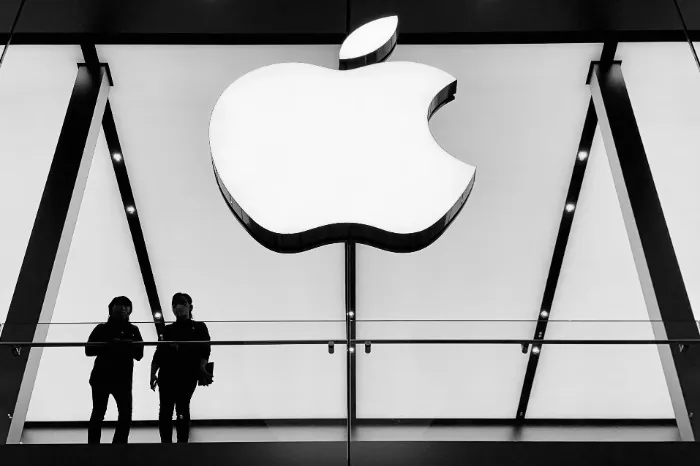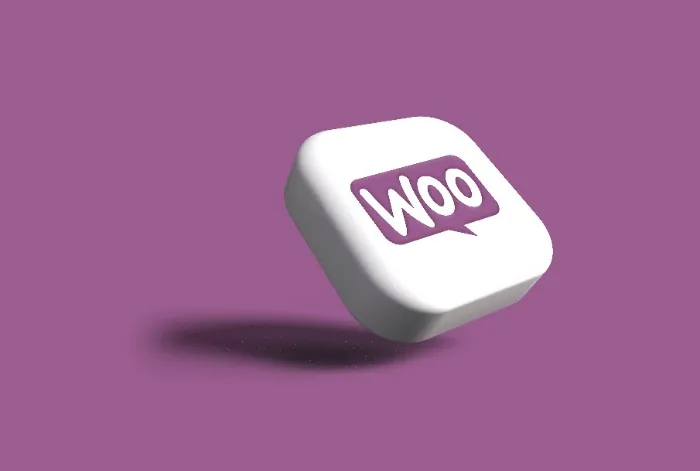Master Pricing to Drive Profit
Published On 17 April, 2023
Understanding how to price your goods, services, or events effectively is crucial to driving profit and revenue. Pricing can be tricky; if prices are set too high, potential sales might be lost. On the other hand, if they’re too low, potential revenue could be missed.
Fortunately, pricing is not simply a guessing game or a matter of sacrifice. Many pricing models and strategies exist to guide you in establishing prices that align with your target audience’s expectations and your revenue objectives.
Whether you’re a novice in the business world or a veteran in pricing matters, this guide’s techniques and strategies will aid you in confidently pricing your offerings. You should bookmark this guide and utilise the chapter links to navigate to sections of particular interest.
A pricing strategy is a plan or method for determining the optimal price for a product or service. Considering consumer and market demand enables you to establish prices that enhance profits and shareholder value.
However, the process involved in pricing is more complex than the definition implies. Pricing strategies consider various business factors such as revenue targets, marketing goals, target demographic, brand positioning, and product features. External factors like customer demand, competitor pricing, and general market and economic trends influence these strategies.
It is common for entrepreneurs and business owners to set their prices hastily. They often evaluate the cost of their products (COGS), consider their competitor’s rates, and slightly adjust their selling price. Even though your COGS and competitors are significant, they should not be the central focus of your pricing strategy.
A superior pricing strategy aims to optimise both your profit and revenue.
Before discussing specific pricing strategies, it’s crucial to understand a fundamental pricing concept that will be relevant no matter what strategies are employed.
Price Elasticity of Demand is a concept used to measure how price alterations impact consumer demand. If consumers continue to buy a product despite a price increase, such as fuel or cigarettes, that product is considered inelastic. Conversely, pricing fluctuations negatively impact elastic products like cable TV and movie tickets.
The price elasticity formula is % Change in Quantity ÷ % Change in Price = Price Elasticity of Demand. This concept aids in understanding whether your product or service is sensitive to price changes. Ideally, your product should be inelastic, meaning demand remains stable even if prices fluctuate.
Next, let’s delve into common pricing strategies, noting that many can be combined when setting your prices:
1. Competitive Pricing Strategy:
A competitive pricing strategy involves setting prices based on prevailing market rates and competitor pricing. The goal is to position your products or services competitively in the market while considering factors such as quality, features, and brand perception. This strategy is commonly used in highly competitive industries where price plays a significant role in customer decision-making.
2. Cost-Plus Pricing Strategy:
This strategy emphasises the cost of producing your product or service. A fixed percentage is added to your product production cost, typically used by retailers who sell physical products.
Cost-Plus Pricing Strategy in Marketing: This strategy works well when competitors use the same model. Before employing this strategy, a pricing analysis that includes your closest competitors should be completed to ensure this strategy will meet your goals.

3. Dynamic Pricing Strategy:
This flexible pricing strategy allows prices to fluctuate based on market and customer demand. Algorithms are applied that consider competitor pricing, demand, and other factors, allowing companies to shift prices to align with the customer’s willingness to pay.
Dynamic Pricing Strategy in Marketing: This strategy can help keep your marketing plans on track, even allowing for real-time A/B testing of dynamic pricing to maximise your profits.
4. Freemium Pricing Strategy:
Companies using this strategy offer a basic version of their product free of charge, hoping users will eventually pay to upgrade or access additional features. SaaS and other software companies commonly use the freemium strategy, which builds trust with potential customers before purchasing.
Freemium Pricing Strategy in Marketing: The freemium pricing strategy provides access to the customer, which can be just as valuable as the initial acquisition.
5. High-Low Pricing Strategy:
This strategy involves selling a product at a high price initially but lowering that price when the product drops in novelty or relevance. High-low pricing is popular with retail firms that sell seasonal items or products that change often.
High-Low Pricing Strategy in Marketing: A high-low pricing strategy can keep customer traffic steady in your stores throughout the year. By evaluating the popularity of your products during different periods throughout the year, you can use low pricing to boost sales during typically slow months.
6. Subscription Pricing Strategy:
A subscription pricing strategy is a model where customers pay a recurring fee at regular intervals to access a product or service, such as through paid plans. This approach is commonly used in industries such as software, media streaming, and online memberships. By offering a subscription, customers can enjoy continuous access to your offerings, and you can generate a steady stream of revenue.
7. Value Bundling Pricing Strategy:
The value bundling pricing strategy involves packaging multiple products or services and offering them at a discounted price compared to purchasing each item individually. This strategy creates a perception of added value and encourages customers to buy more from your business. Value bundling is commonly used in telecommunications, fast food, and software industries.
8. Loyalty-Based Pricing Strategy:
A loyalty-based pricing strategy involves offering discounted prices or exclusive benefits to loyal customers as a reward for their continued support. This strategy aims to strengthen customer loyalty, increase customer retention, and encourage repeat purchases. Loyalty-based pricing is commonly used in retail, hospitality, and airline industries through loyalty programs and membership tiers.
9. Hourly Pricing:
Hourly pricing is a pricing strategy commonly used by service-based businesses to charge their clients based on the amount of time spent on a specific project or task. With this strategy, companies typically determine an hourly rate for their services and then calculate the total cost by multiplying the hours worked by the hourly rate. Hourly pricing offers flexibility, as clients only pay for the time spent on their projects. This strategy is commonly seen in consulting, legal services, and freelance work.
10. Skimming Pricing:
Skimming pricing is a strategy where a business sets an initial high price for a product or service when it is first introduced to the market. This approach is often employed for innovative or high-end products where the business aims to target early adopters and capture maximum profits from the market demand. Over time, as competition increases or market saturation occurs, the company gradually lowers the price to attract a broader customer base. Skimming pricing allows businesses to capitalise on the willingness of certain customers to pay a premium for new and exclusive products.
11. Penetration Pricing:
Penetration pricing is the opposite of skimming pricing. In this strategy, a business initially sets a low price for its product or service to gain market share and attract customers quickly. The goal is to stimulate demand, create brand awareness, and establish a customer base. As the market share increases and the product becomes more established, the business may gradually raise prices to generate higher profits. Penetration pricing is often used by businesses entering competitive markets or launching new products.
12. Premium Pricing:
Premium pricing involves setting a high price for a product or service to position it as exclusive, luxurious, or of superior quality. This strategy targets customers who associate higher prices with better quality and prestige. Premium pricing creates a perception of value, uniqueness, and an exceptional customer experience. Businesses using this strategy often invest heavily in marketing, branding, and product differentiation to justify the higher price point.

13. Project-Based Pricing:
Project-based pricing is a strategy where a business sets a fixed price for a specific project or deliverable. This pricing approach is commonly used in construction, advertising, and software development industries, where projects have well-defined scopes and timelines. The price is determined by estimating the resources, effort, and expenses required to complete the project. Project-based pricing clarifies the cost and deliverables to the business and the client, which helps manage expectations and reduces uncertainty.
14. Value-Based Pricing:
Value-based pricing is a strategy that sets prices based on a product or service’s perceived value to the customer. Instead of focusing solely on production costs or competitor prices, value-based pricing considers the customer’s perception of the product’s benefits, features, and overall value proposition. By aligning the price with the value received, businesses can capture a fair share of their customers’ value. This strategy requires a deep understanding of customer needs, preferences, and willingness to pay, often involving market research and customer segmentation.
In conclusion, these pricing strategies provide businesses with various approaches to setting prices for their products or services. Each strategy has its advantages and considerations, and choosing the most appropriate strategy depends on factors such as market dynamics, competition, customer segments, and the perceived value of the offering.

Creating a Pricing Strategy: A Step-by-Step Guide
It is recommended to follow the following steps when creating a pricing strategy for your company:
Step 1: Assess your pricing potential.
Evaluating your pricing potential is essential to develop an effective pricing strategy tailored to your business. This involves considering geographical market specifics, operating costs, inventory levels, demand fluctuations, competitive advantages, and demographic data. By understanding these elements, you can determine the approximate pricing that aligns with your costs, market demand, and other relevant factors.
Step 2: Identify your buyer personas.
Pricing your product or service should be based on the characteristics and preferences of your target customers. Start by defining your buyer personas, considering customer lifetime value, willingness to pay, and pain points. Conduct interviews with existing customers and prospects to gain insights into their preferences and seek feedback from your sales team on the most promising leads and their characteristics.
Step 3: Analyse historical data.
Review your past pricing strategies and their outcomes. Analysing data such as closed deals, churn rates, and product sales associated with different pricing approaches can provide valuable insights. Identify the strategies that have been most successful in achieving your business goals and consider incorporating them into your new pricing strategy.
Step 4: Balance value and business goals.
When developing your pricing strategy, balance the value you offer and your business objectives. Ensure that your prices support both your bottom line and the preferences of your buyer personas. This compromise aims to increase profitability, improve cash flow, penetrate the market, expand market share, and enhance lead conversion rates.
Step 5: Evaluate competitor pricing.
Conduct thorough research on your competitors’ pricing for similar products or services to create a competitive pricing strategy. Based on this analysis, you have two options:
- Beat your competitors’ price: If a competitor is charging more for a comparable offering, consider pricing your product or service more affordably to attract price-sensitive customers.
- Beat your competitors’ value: Alternatively, adopt a value-based pricing approach and price your offering higher if the value provided to customers surpass your competitors.
Following these steps, you can develop a comprehensive pricing strategy that aligns with your business objectives, target customers, and market dynamics.
Pricing Models for Different Industries and Businesses
Creating an effective pricing strategy requires considering each industry or business’s unique characteristics and requirements. Only some pricing strategies are suitable for some types of business. Let’s explore industry-specific examples of common pricing models.
1. Pricing Models for Physical Products
Physical products involve tangible goods with associated costs such as shipping, production, and storage. Pricing strategies for physical products should maximise profit, support research and development, and effectively compete with similar products.
Examples of pricing strategies for physical products include:
- Cost-plus pricing: Setting a price by adding a markup to the production cost.
- Competitive pricing: Pricing products to match or undercut competitors’ prices.
- Prestige pricing: Setting higher prices to create a perception of exclusivity and quality.
- Value-based pricing: Determining prices based on the product’s perceived value to customers.
2. Pricing Models for Digital Products
Digital products like software, online courses, and digital books have no physical costs. Pricing for digital products should consider brand value, industry standards, and the overall perceived value to customers.
Examples of pricing strategies for digital products include:
- Competition-based pricing: Setting prices based on competitors’ offerings in the market.
- Freemium pricing: Offering a basic version for free and charging for premium features.
- Value-based pricing: Pricing is based on the unique value and benefits provided to customers.
3. Pricing Models for Restaurants
Physical costs, overhead expenses, and service-related factors influence restaurant pricing. Restaurant pricing strategies should consider customer base, market trends, food costs, and dining experience.
Examples of pricing strategies for restaurants include:
- Cost-plus pricing: Determining prices by adding a markup to the cost of ingredients and preparation.
- Premium pricing: Setting higher prices to position the restaurant as a luxury or high-end establishment.
- Value-based pricing: Pricing is based on the perceived value of the dining experience, quality of food, and service.
4. Pricing Models for Events
Events cannot be accurately measured based on production costs alone. Event pricing should consider the cost of marketing and organising and factors such as speakers, entertainers, networking opportunities, and the overall experience.
Examples of pricing strategies for live events include:
- Competition-based pricing: Setting prices based on comparable events in the market.
- Dynamic pricing: Adjusting prices based on demand and popularity of the event.
- Value-based pricing: Pricing is based on the unique value and experience provided to attendees.
5. Pricing Models for Services
Services can be challenging to price due to their intangible nature and lack of direct production costs. Pricing strategies for services should consider the expertise and perceived quality of the service provider.
Examples of pricing strategies for services include:
- Hourly pricing: Charging clients based on the time spent providing the service.
- Project-based pricing: Setting prices for specific projects or deliverables.
- Value-based pricing: Pricing is based on the value and impact of the service on the client’s business.
6. Pricing Models for Non-profits
Non-profits also require pricing strategies to optimise their operations and long-term success. Non-profit pricing strategies should consider current spending, expenses, ideal profit margins, and effective stakeholder communication.
Examples of pricing strategies for non-profits include:
- Competitive pricing: Setting prices based on comparable non-profit services or initiatives.
- Cost-plus pricing: Determining prices by adding a markup to the cost of delivering the non-profit’s programs.
- Demand pricing: Adjusting prices based on the demand and perceived value of the non-profit’s services.
- Hourly pricing: Charging based on the time and effort dedicated to non-profit activities.
7. Pricing Models for Education
Education pricing varies depending on the level of education, public or private institutions, and specific programs or disciplines. Tuition, additional fees, competition among schools, and other factors influence education pricing strategies.
Examples of pricing strategies for education include:
- Competitive pricing: Setting prices based on the tuition fees of similar educational institutions.
- Cost-based pricing: Determining prices based on the cost of delivering the educational program.
- Premium pricing: Charging higher prices for prestigious or specialised educational programs.
8. Pricing Models for Real Estate

Real estate pricing involves market competition, housing demand, and cost of living. Bidding wars, market estimates, and seasonal fluctuations are important considerations in real estate pricing models.
Examples of pricing strategies for real estate include:
- Competitive pricing: Setting prices based on comparable properties in the market.
- Dynamic pricing: Adjusting prices based on market demand and supply.
- Premium pricing: Setting higher prices for properties with unique features or prime locations.
- Value-based pricing: Pricing is based on the perceived value and desirability of the property.
Each industry and business require careful consideration when developing a pricing strategy. By tailoring pricing models to specific sectors, companies can optimise their pricing decisions and effectively meet customer needs while maximising profitability.
Understanding Pricing Analysis
Pricing analysis is a strategic tool to evaluate your existing pricing strategy against the market’s demands. The primary goal is to identify potential areas for pricing adjustments that could lead to improvements. Conducting a pricing analysis periodically or during the development of new products, positioning strategies, or marketing campaigns is recommended to ensure good product performance.

Step-by-step Guide to Conduct a Pricing Analysis
Step 1: Calculate the True Cost of Your Product or Service
First, identify all the expenses associated with your product or service, including fixed and variable costs. Once these costs are determined, deduct them from your product or service’s existing or proposed price.
Step 2: Gauge Your Target Market’s Response to Your Pricing
Use surveys, focus groups, or questionnaires to understand how your pricing model resonates with your target market. This insight can help determine your customer’s value and the amount they’re prepared to pay for your product or service.
Step 3: Evaluate Competitor Pricing
There are two types of competitors to consider: direct and indirect.
- Direct competitors sell the same product as you, often compete on price, and should be prioritised in your pricing analysis.
- Indirect competitors offer similar but not identical products, and customers might opt for their creations if yours is out of stock or priced beyond their budget.
Step 4: Review Legal and Ethical Pricing Constraints
When conducting a pricing analysis, ensure a clear understanding of price-fixing and predatory pricing. Knowing these legal and ethical boundaries will help you avoid potential pitfalls.
Carrying out a pricing analysis helps refine your pricing strategy, whether introducing a new product, enhancing an existing one, or tweaking your marketing strategy.
Application of Pricing Strategies
Deciphering pricing models can be a complex task. Here are a few illustrations of pricing strategies applied to familiar situations or companies worldwide.
1. Dynamic Pricing Strategy: Qantas Airlines

Pricing Strategy Example: Qantas Airlines’ dynamic pricing strategy
Living just a short drive from Sydney Kingsford Smith Airport, the thrill of travelling often beckons. However, purchasing tickets for Qantas Airlines often presents an intriguing study in pricing strategies. The cost of the same flight can fluctuate significantly depending on when you check – buying tickets six weeks ahead versus six days prior can make a world of difference.
This is an example of dynamic pricing, where prices vary based on market conditions and customer demand. Prices for Qantas flights can also increase during holidays, coinciding with a surge in travellers.
2. Freemium Pricing Strategy: Spotify
Pricing Strategy Example: Spotify’s freemium pricing strategy

Spotify epitomises the freemium pricing model. It offers a free version with limited features and paid subscriptions that unlock premium features like ad-free listening. This strategy lets customers familiarise themselves with Spotify’s services before deciding whether to pay for enhanced access.
3. Penetration Pricing Strategy: Apple

Apple exemplifies a penetration pricing strategy, initially entering the market with attractively low prices to establish a customer base and raise them. Despite periodic price adjustments, Apple maintains a strong hold on its customer base and continues to allure new customers through its commitment to high-quality products and exceptional post-purchase services.
4. Premium Pricing: Louis Vuitton
Pricing Strategy Example: Louis Vuitton premium pricing example

Louis Vuitton is a classic instance of premium pricing. The high cost of their products is justified by their brand reputation, quality, and the luxury experience they offer customers. Louis Vuitton’s value aligns with its pricing, making customers willing to pay.
5. Competitive Pricing Strategy: WooCommerce
Pricing Strategy Example: WooCommerce’s competitive pricing strategy

WooCommerce, an e-commerce plugin for WordPress, utilises a competitive pricing strategy. Numerous e-commerce solutions are available, but WooCommerce differentiates itself with its range of features and price points. It offers three price-tiered versions of its product with various customisable features, making it an attractive choice in the competitive e-commerce space.
6. Project-Based Pricing Strategy: IBM

In professional IT services, IBM adopts a project-based pricing strategy. Recognising the substantial investments clients make in their projects, IBM charges a prearranged fixed fee for the entire engagement, emphasising the value provided rather than billing based on hourly rates or individual tasks. This approach appeals to clients seeking budget predictability and transparency, enabling them to manage costs effectively while leveraging IBM’s esteemed expertise in technology and consulting.
Value-Based Pricing Strategy: Tomorrowland
Pricing Strategy Example: value-based pricing strategy for Tomorrowland

Tomorrowland, the world-renowned music festival, offers a variety of tickets at different price points. By providing multiple ticket “levels,” attendees can choose their experience based on their perceived value of the event. As the event date approaches, ticket prices tend to increase, making this a dynamic pricing strategy.
8. Bundle Pricing: AXA Insurance
Pricing Strategy Example: bundle pricing for AXA Insurance

AXA Insurance is renowned for its bundle deals for home and auto insurance. Customers can receive quotes individually, but opting for both can lead to savings. AXA benefits from selling more policies, while customers pay less than they would with different providers.
9. Geographic Pricing: Petrol/Diesel
Pricing Strategy Example: geographic pricing for petrol/diesel

Fuel prices vary significantly around the globe, and even within the same country, prices can differ greatly. This geographic disparity in pricing can be attributed to various factors, including laws, environmental considerations, and production costs.
Getting Your Pricing Strategy Right
Setting the right prices involves balancing various factors, including competition, production costs, customer demand, industry needs, and profit margins. The process can be manageable; begin by evaluating your cost of goods sold (COGS) and profit goals and determine what’s crucial for your business. Remember, pricing is an iterative process, and it’s normal to take several attempts before you get it right and land on the best pri



